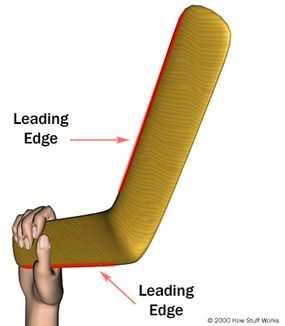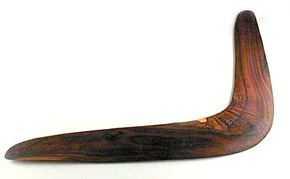Learn more about personaldevelopment with this collection
How to find purpose and meaning in life
How to cultivate gratitude
Techniques for managing negative thoughts
Returning Boomerangs
Returning boomerangs are the banana-shaped devices that come back to you when you throw them.
The returning boomerangs are made from lightweight pieces of wood, plastic or similar material and generally measure 1 to 2 feet (30 to 60cm) across. When thrown correctly, a returning boomerang flies in a circular path and returns to its starting point.
16
352 reads
Non-returning boomerangs
Non-returning boomerangs are effective hunting weapons. They are easy to aim and can travel a longer distance at a high rate of speed.
These boomerangs are made from pieces of wood shaped in a curve, but they are usually heavier and longer than the returning boomerang, about 3 feet (1 metre) across. The design helps them cut through the air.
12
50 reads
Why boomerangs fly
A boomerang has at least two wings combined in one unit. It makes a boomerang spin about a central point, stabilising its motion as it flies through the air.
The wings are set at a slight tilt. They have an airfoil design - rounded on one side and flat on the other - which gives a wing lift. The wing has lift when the air particles move quicker over the top of the wing than the bottom, which creates a difference in air pressure, causing lift.
13
59 reads
A boomerang is like a propeller
The two wings of a boomerang are arranged so that the leading edges are facing in the same direction, like propeller blades. Propellers create a forward force by spinning the blades.
If you throw a boomerang, as you do with a Frisbee, you may assume the forward motion would be up, and the boomerang would fly up until it stopped spinning and gravity pulled it down again. If you held it vertically when you threw it, as is proper, it seems that it would fly off to the right or left. But that is not what happens.
11
37 reads
Why a boomerang comes back
When you throw the boomerang:
- It not only spins propeller motion but also flies through the air.
- The wing at the top of the spin moves in the same direction as the forward motion of the throw, while the bottom wing moves in the opposite direction.
- This causes the top wing to move through the air at a higher speed.
- It makes more air pass under it and creates lift because the wing has to exert more force to push down the increased mass.
- It is as if someone is continually pushing the spinning propeller at the top of the spin, causing it to keep turning, travelling in a circle.
12
34 reads
Forces that affect a boomerang flight
There are five variables involved in a boomerang flight:
- The force of gravity
- The force caused by the propeller motion
- The force of your throw
- The force caused by the uneven speed of the wings
- The forces of wind
All five forces have to be balanced to make a boomerang travel in a circle and come back to its starting point. The only way to consistently make good throws is to practice good technique.
11
20 reads
How to throw a boomerang
- Hold the boomerang at the end of the bottom wing, with the V-point pointing toward you, the flat side facing out. The curved edge will be on the left and the top wing's leading edge facing away from you.
- Aim the boomerang at a point about 45 to 50 degrees to one side from the wind direction.
- Bring the boomerang behind you and snap it forward (like throwing a baseball). Ensure you snap your wrist when you let go to create a good spin.
- When it comes back to you, safely catch it by clapping it between your two hands.
11
21 reads
The boomerang the first man-made flying machine
Aborigines of Australia are credited with the invention of the boomerang. They used non-returning boomerangs in hunting, called kylies.
The returning boomerang might be a complete accident or the result of design experimentation. The Aborigines perfected the boomerang design and throwing technique for the simple pleasure of it.
12
34 reads
CURATED BY
More like this
12 ideas
How planes work | the science of flight
explainthatstuff.com
4 ideas
Why vinyl records survive in the digital age
arstechnica.com
10 ideas
Read & Learn
20x Faster
without
deepstash
with
deepstash
with
deepstash
Access to 200,000+ ideas
—
Access to the mobile app
—
Unlimited idea saving & library
—
—
Unlimited history
—
—
Unlimited listening to ideas
—
—
Downloading & offline access
—
—
Personalized recommendations
—
—
Supercharge your mind with one idea per day
Enter your email and spend 1 minute every day to learn something new.
I agree to receive email updates



